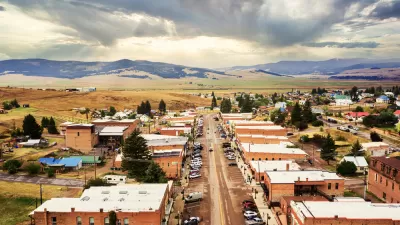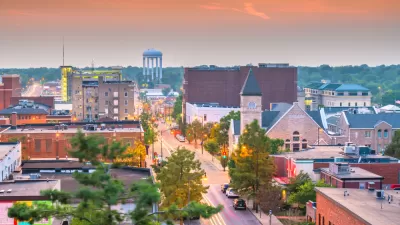The U.S. Census Bureau released its report for the year ending July 1, 2008. It showed that the effect of the recession was to reduce domestic migration from the Northeast and Midwest to the West and Sunbelt. Utah was the fastest growing state.
"U.S. migration typically slows during recessions because new jobs are the primary reason people move across state lines, according to the Pew Research Center. With the country on track to shed more than 2 million jobs this year, there are fewer reasons to move.
William Frey, a senior demographer at the Brookings Institution, said the decrease in migration is notable for its breadth. The housing bust and the recession have slowed migration to fast-growing states in the Sun Belt and the West."
"The long-term trend has been for Americans to leave Northeast and Midwest population centers for warmer, job-creating states in the Sunbelt and West. That movement has slowed, according to the Census. New York, Massachusetts, New Jersey and Connecticut had much higher growth rates last year than they did during the housing boom earlier this decade. Nevada and Arizona, which over the past few years vied to be the nation's fastest-growing state, saw their rates of growth decrease."
"Two states, Michigan and Rhode Island, lost population, with each state suffering unemployment rates greater than 9%."
From U.S. Census Bureau release:
"Utah was the nation's fastest-growing state between July 1, 2007, and July 1, 2008, as its population climbed 2.5 percent to 2.7 million, according to estimates released today (Dec. 22) by the U.S. Census Bureau.
On the whole, the Northeastern states have gained population at an increasing rate since 2005, a turnaround from their declining growth rates from 2000 to 2005."
FULL STORY: Recession Slows Migration in U.S.

Planetizen Federal Action Tracker
A weekly monitor of how Trump’s orders and actions are impacting planners and planning in America.

Restaurant Patios Were a Pandemic Win — Why Were They so Hard to Keep?
Social distancing requirements and changes in travel patterns prompted cities to pilot new uses for street and sidewalk space. Then it got complicated.

Map: Where Senate Republicans Want to Sell Your Public Lands
For public land advocates, the Senate Republicans’ proposal to sell millions of acres of public land in the West is “the biggest fight of their careers.”

Maui's Vacation Rental Debate Turns Ugly
Verbal attacks, misinformation campaigns and fistfights plague a high-stakes debate to convert thousands of vacation rentals into long-term housing.

San Francisco Suspends Traffic Calming Amidst Record Deaths
Citing “a challenging fiscal landscape,” the city will cease the program on the heels of 42 traffic deaths, including 24 pedestrians.

California Homeless Arrests, Citations Spike After Ruling
An investigation reveals that anti-homeless actions increased up to 500% after Grants Pass v. Johnson — even in cities claiming no policy change.
Urban Design for Planners 1: Software Tools
This six-course series explores essential urban design concepts using open source software and equips planners with the tools they need to participate fully in the urban design process.
Planning for Universal Design
Learn the tools for implementing Universal Design in planning regulations.
Heyer Gruel & Associates PA
JM Goldson LLC
Custer County Colorado
City of Camden Redevelopment Agency
City of Astoria
Transportation Research & Education Center (TREC) at Portland State University
Camden Redevelopment Agency
City of Claremont
Municipality of Princeton (NJ)





























